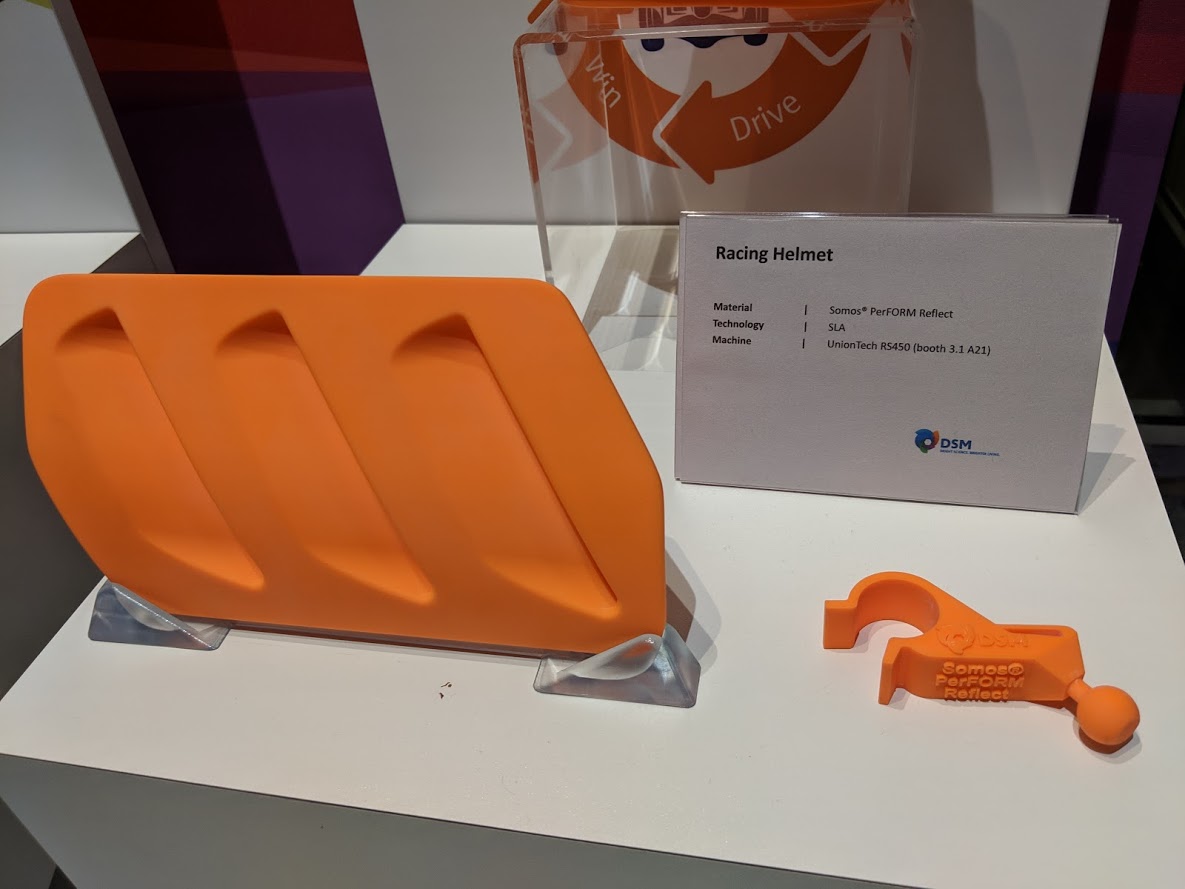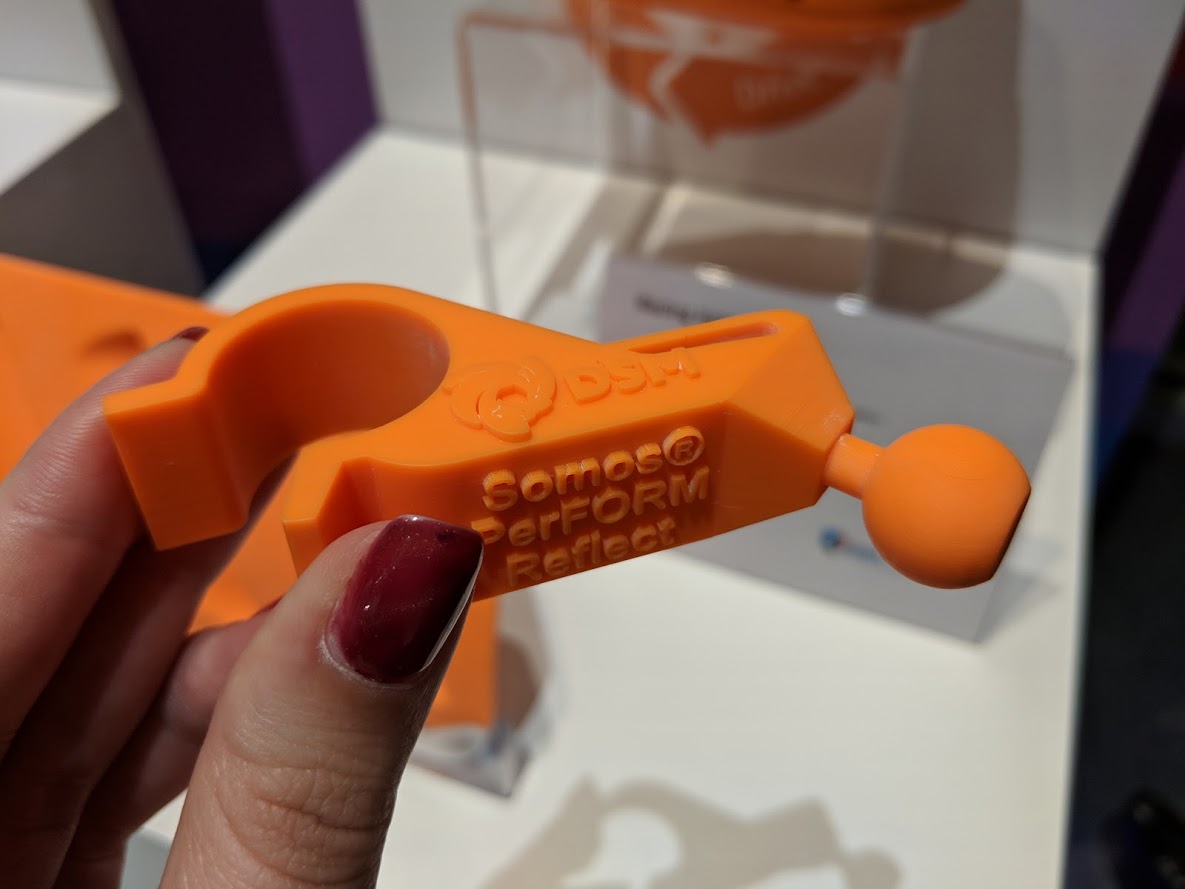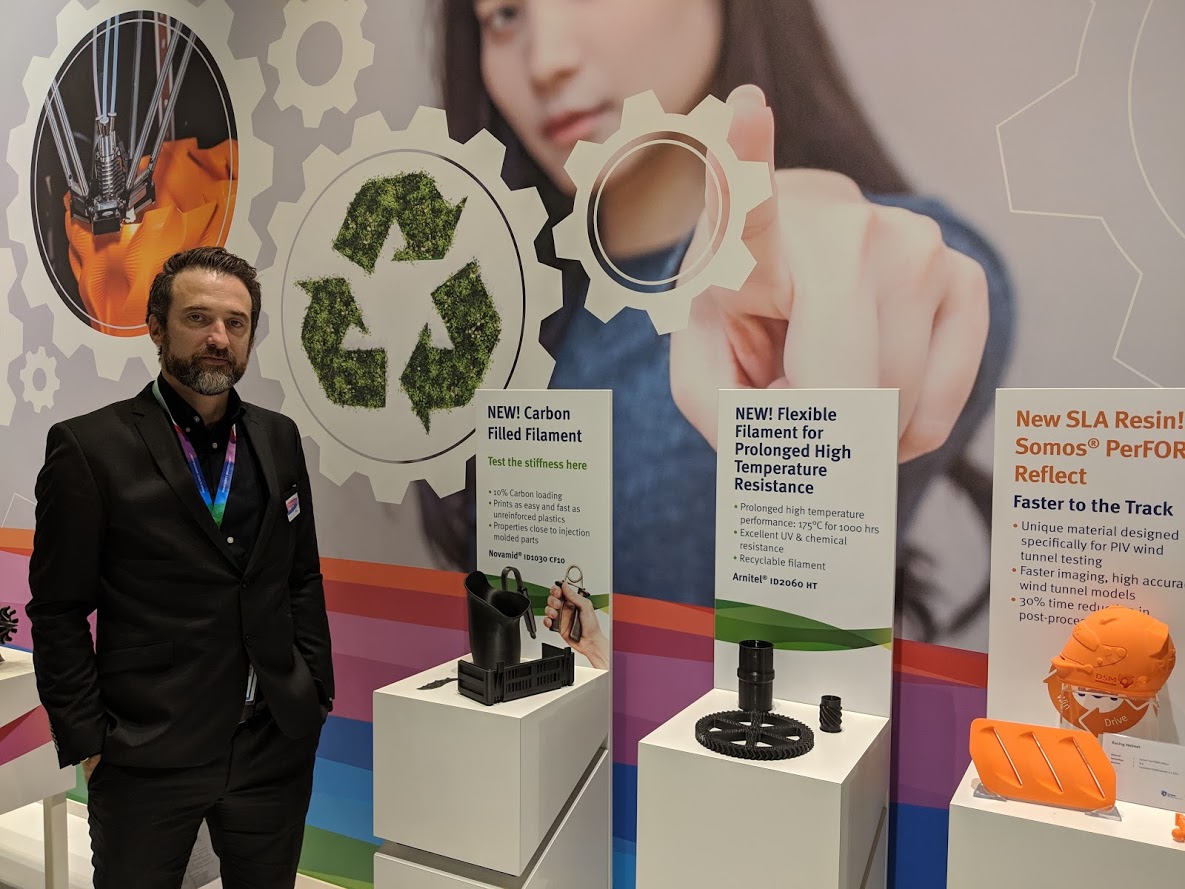![Hugo da Silva, Vice President of Additive Manufacturing, DSM, with new materials at formnext 2018 [Image: Fabbaloo]](https://fabbaloo.com/wp-content/uploads/2020/05/image-asset_img_5eb0a22e1f863.jpg)
DSM updates its additive manufacturing vision with new materials and solid strategies.
Announced last November, the Additive Manufacturing business in DSM’s Materials sector launched in January. I sat down at formnext with Hugo da Silva, Vice President of Additive Manufacturing at DSM, to catch up on the business’ latest updates.
“The vision is driven by an application focus, by understanding needs. If the product you want to build is this drinking glass,” he said, holding up a water glass, “it’s the glass that’s important to you, not the materials or process that make it. We’re working to get more partners; it’s about creating a full solution, working together. There are a lot of combinations that will deliver what’s best.”
That dedication to best-fit solutions, rather than fitting solutions into an existing portfolio of fits-well-enough options, is lighting the way for DSM. Creating new materials fits neatly here as the industry continues to grow up and 3D printing makes its way into more applications — including production.
“Our business model is based on what will accelerate adoption. Previously, 3D printing was very appropriate for prototyping but not for production. Now, with production applications, with economy of scale, we are delivering on this vision,” da Silva added.
An important piece of the DSM materials puzzle lies in the company’s dedication to sustainability, which is now making its way more soundly into its additive manufacturing operations.
“We are adding the umbrella of sustainability: DSM is a leader in sustainability, concerning all of our businesses, and it plays a big role in 3D printing. 3D printing by nature is sustainable, as it uses less material because of design advantages, customization, logistics, and a shortened supply chain. As DSM, as a respected entity in sustainability, this is a core part of our strategy. We are working hard to make sure our materials are upcyclable and downcyclable,” he said.
The company’s vision is built upon three pillars:
-
Application focus
-
Ecosystem approach
-
Partnerships
And now, da Silva said, add sustainability to those.
“It is much easier to change an industry in its infancy than to change what’s in place,” he said of the young 3D printing industry.
Working in 3D printing while the technology is only a few decades old allows for best practices to be built in from early days.
Looking ahead, da Silva dived into an exploration of how DSM is dedicated to driving applications, primarily through deeply understanding use cases.
An example of a specific application DSM is addressing with a new material launched at formnext is wind tunnel testing. The new Somos PerFORM Reflect is an SLA material for wind tunnel testing with particle imaging velocimetry (PIV), with reduced need for post-processing due to the removal of the need to apply PIV coatings to 3D printed parts.
“A lot of companies really understand their needs now, such as what is required for wind tunnel testing. This is what drives us to be faster, more accurate. Wind tunnel testing is not a large production application, but is one that needs optimized design for aerodynamics and needs materials that are easier, better, and more reliable,” da Silva said. “Our launches are strongly geared toward applications.”



In addition to the new Somos material, DSM introduced Arnitel ID2060 HT high-performance thermoplastic copolyester for FFF 3D printing. Again developed with applications in mind, this filament is “suitable for under the hood applications and components for end-of-arm tooling, such as air-fuel management systems, engine shields and covers for automotive,” DSM noted in the materials announcement.
It’s a different game, da Silva continued, moving from prototyping to production — and to play that game, ecosystem and partner thinking are more important than ever.
“We are working very close to printer manufacturers, we have a strong belief in working closely with designers, software, hardware, and materials. Soon there will be more announcements about partnerships, design, and end users,” he said, touching on a recent announcement made with Ultimaker for that company’s materials program.
“We are glad to see so many material companies working toward reliable printing, it will unlock more applications. Less than 1% of the materials available in other manufacturing processes are available in additive manufacturing. Programs like this one from Ultimaker help users find the best material solutions. Like with HP and its Open Materials Platform, too, such collaborations are enabling applications and real production.”
For DSM’s part, we can expect to hear more in the way of materials announcements in addition to other partnerships.
“There are a lot of products cooking in our kitchen,” da Silva said. “In Q1 of next year, for example, we will see some powders.”
Via DSM











An inventive designer has developed a method for producing 3D paper objects using recycled paper and 3D printed molds.